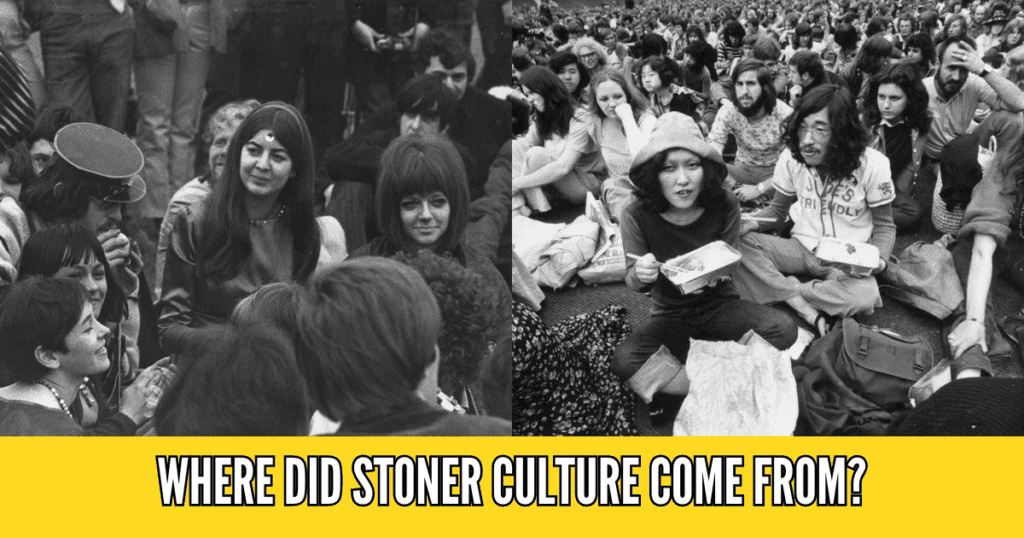
Words have a way of painting pictures in our thoughts. When you think of the word “tranquil,” you may imagine a peaceful pool. The word “lush” could bring up images of a gorgeous garden. But what about terms that describe entire communities?
One word stands out: “stoner.” Oxford Languages defines it as “a person who regularly takes drugs, especially marijuana.” When you hear it, you may envision someone relaxed, going with the flow, and appreciating cannabis. But how did this word come to be, and why does it refer to a particular lifestyle and culture?
The term “stoner” has been around for a while, but no one knows exactly where it comes from. Anecdotal online sources state that the concept of getting “stoned” on different drugs, not simply marijuana, first appeared in the early to mid-1900s. The slang phrase became widespread during the counterculture movements of the 1960s and 1970s. According to Britannica, this was a period when individuals were experimenting with new ways of life, including the use of narcotics such as cannabis and rejecting traditional customs.

According to Peace: The Biography of a Symbol, living during this period was about coming together for change. People gathered in groups, sharing their dreams of harmony and unity. Streets were filled with activism as people marched for civil rights, the environment, and peace. It was a lively scene, with loud chanting and vibrant flags. In this climate, the peace sign became more than just a symbol; it was a call for people to take action for a better world. It was a time of hope and action, when ordinary citizens rose up for justice and peace.

Stoner culture emerged as these groups of cannabis enthusiasts connected through their common experiences and tastes. Icons such as Bob Marley, Cheech and Chong, and cinematic characters who embodied the stoner persona played an important role in establishing the culture, which emphasizes relaxation, creativity, and connecting among its many values.
However, stoner culture is not without its challenges. While some people praise cannabis as a recreational drug and push for its legalization, others are concerned about its potential health dangers, Schedule 1 status, and impact on society, particularly among younger generations. Stoner culture tropes and stigmas have become ingrained in critics’ minds as they have spread across mainstream media since the 1960s.
However, the typical stereotype of a stoner has begun to shift. California was the first to allow medicinal cannabis as a therapy option for specific qualifying diseases in 1996, and 40 of the 50 states have followed suit. Since then, a number of states have also moved to legalize recreational use. This change in legislation reflects shifting attitudes regarding cannabis and its potential benefits.

As a result, stoner culture is also changing. People from all areas of life are openly discussing their cannabis experiences, breaking down misconceptions and building understanding. Stoner culture, as a subset of cannabis, is constantly evolving and growing, much like the plants themselves.
In conclusion, the evolution of stoner culture demonstrates how language, society, and personal experiences connect. The term “stoner” has multiple meanings to different people, reflecting our constantly evolving culture. As cannabis laws and social attitudes change, stoner culture will remain a unique source of interest and conversation.